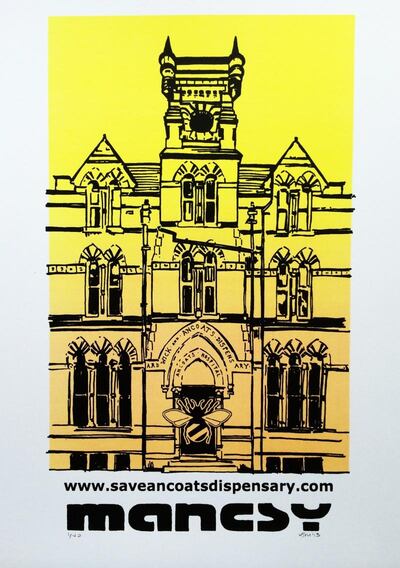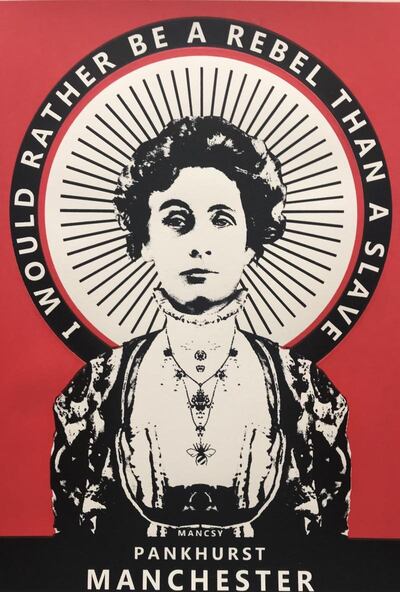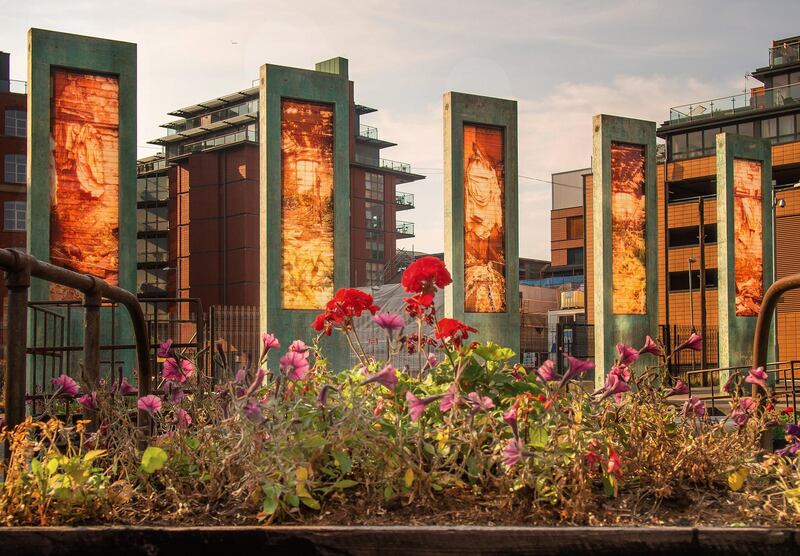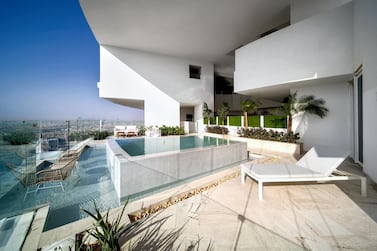Street art, check. Underground music scene, check. Experimental young chefs, check. Welcome to Ancoats, the artistic epicentre of Manchester in northern England.
Travel bugs from across the world are descending in droves, sniffing out a neighbourhood so laid-back it's horizontal (literally – the streets are uncannily flat for a usually hilly city). It has artisan bakeries and the 10th best pizzeria in the world, as well as entire buildings caked in street art. It has Manchester's best restaurant, led by a chef who trained at the world's best restaurant. And it's only about an eight-hour flight from the UAE.
Ancoats is central to Manchester’s industrial heritage. The city boomed during northern England’s glory years in the 19th century as the cotton capital of the world. At its peak, the city had almost 2,000 cotton spinning mills and produced a third of the world’s cotton, earning itself the nickname Cottonopolis. However, as better and cheaper technology became available elsewhere and appetites drifted towards modern synthetic materials in the mid-1900s, Cottonopolis crashed.
Thousands of workers lost their jobs, factories were abandoned and large areas fell into poverty and disrepair. For decades, Ancoats, which lies about 10 minutes north of Manchester city centre's main train station, Piccadilly, stood as a crumbling reminder of a once glorious past.
Now, with the arrival of trendy office blocks, smart flats and a first-rate dining scene, Ancoats is shaking off its gloomy past, in what Sheona Southern, managing director at Marketing Manchester, calls its renaissance. “Ancoats is busy with new life,” she says. “Today there’s an incredible spirit of creativity and opportunity in the area, reviving the energy that made it such a prominent location centuries ago.”
The long-standing mills will always nod to its working-class background and, like Mancunians themselves, the world is embracing it. Global lifestyle magazine Time Out named it the world's 13th coolest neighbourhood last year, while newspapers, from the New York Times to San Francisco Chronicle, have urged American readers not to miss Ancoats if they pay a visit to the UK. Manchester has always been stylish thanks to its roots in cotton, its global Premier League powerhouse neighbours Manchester City and Manchester United, and its renowned music scene, but it is Ancoats that is really turning heads these days.
Start a conversation with any stranger in Manchester and you face being dragged into a debate about who is best. The Smiths or The Stone Roses? City or United? Oasis or, well, no one? Oasis is life for all those who consider themselves true bastions of the north (you have been warned). And, much like the Gallagher brothers, there's a newcomer that's travelling at supersonic speed to stardom: Rudy's Pizzeria.
The humble eatery was named the 10th best pizzeria on the planet by industry experts at Big Seven Travel – beating competition from pizza capitals such as Naples, New Jersey and New York. It's casual, always packed and comes with a 45-minute wait most nights.
There are a host of other come-as-you-are spots, such as Viet Shack, the first permanent bricks-and-mortar spot for the food shack that regularly picks up "Best Budget Restaurant" at city food awards, Elnecot, which celebrates traditional English cuisineand Pollen Bakery.
Just like Rudy's, dozens of hungry followers queue for up to an hour to purchase the exquisite patisseries, sourdough loaves and homemade bakes from Pollen. Nothing illustrates how far Ancoats has moved on from its gritty start more than the sight of beaming Mancs chomping into a crispy, sugary cruffin (a croissant shaped like a muffin) filled with a pistachio creme patissiere and washing it down with an organic roasted latte.
While the only Manchester restaurant to break into the UK's top 100 restaurants is Mana, its chef Simon Martin was schooled at the world-famous Noma in Copenhagen and is turning heads with the inventive plates at his Ancoats home.
Once upon a time, art in Ancoats comprised garish graffiti scrawled on to boarded up pubs and fenced off wasteland. But now, where no creative type would have once dared to dip their brush, sprawling street art covers the red bricks of old textile mills. And a thriving arts and culture scene buzzes within.
A poignant mural of a young girl on the outskirts of Ancoats acts as a marker of the transformation. Young Identity by Spanish artist Axel Void on Addington Street depicts the human pursuit of happiness. Another artist who has splayed his work across the streets of Ancoats is proud Mancunian "Mancsy", who much like celebrated artist Banksy, anonymously leaves his mark around the city.

Mancsy toys with his fans by pinning up artworks in nondescript spots across the city – including Ancoats – before posting cryptic clues about their whereabouts on social media as avid admirers join the "finders keepers" game (find the artwork first and you get to keep it). And he's been doing it for more than a decade.
"I call Manchester a creative hub. Our history is associated with industry but even that called for invention and vision," Mancsy says. "I fully believe there is something creative in the city's culture. If you think of all the things we are famous for in music, sport, science and so on, the common denominator is creativity. Ancoats was the centrepoint of our industrial heritage and it was a dark place for many years.
"These days, Ancoats has a large art community and the changing nature of the area means it's attracting an audience that wants to consume art. I've worked in the city for a long time; the arts scene has become more public. It's always existed as it is a creative city but now we network, exhibit and interact more actively. The monthly giveaways take from the original concept to engage people in a game."

Ancoats is also home to independent Hope Mill Theatre, a renowned hub that produces small plays and musicals in a converted mill building, often hosting new work that finds its way to London's West End and Broadway in New York.
And if you're taking a stroll down Blossom Street, don't be surprised to experience the reverberation of a full classical ensemble and the roar of the enthusiastic Mancunians who make up the Halle orchestra at St Peter's Church.
The Victorian Grade II-listed building warrants a visit in itself, though if you're lucky you can catch a rehearsal or performance from the orchestra, which has been a part of the former church since 1858.
Overall, it's the character of Ancoats that makes it such a draw to locals and visitors alike. "Anyone who's visited the neighbourhood would agree that there's a real atmosphere of creative freedom here," says Southern. "And it's one that's open to all."






